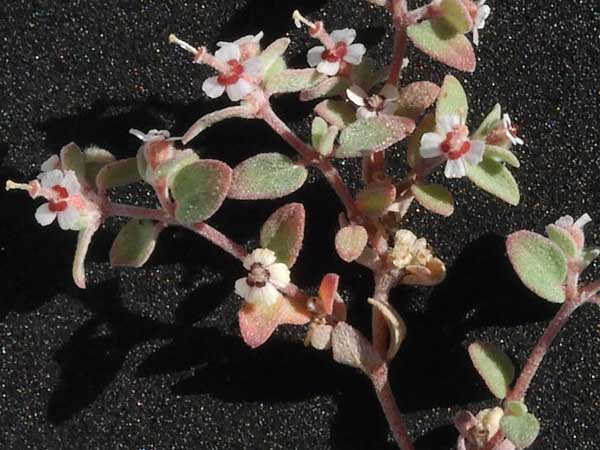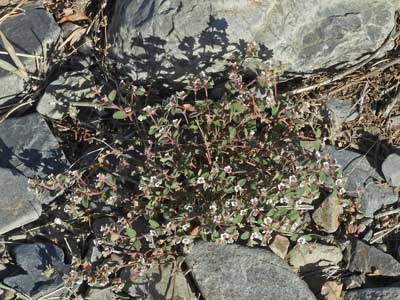Red-gland Sandmat
Euphorbia (Chamaesyce) melanadenia

New River Mountains, Maricopa Co., Arizona, Apr. 2018.
Sponsored Links:
RANGE: There are over 40 kinds of Euphorbia that can be found in Arizona - most look very similar when seen
growing low as prostrate mats. Only by close inspection with a hand lens can the varieties be distinguished -
and their beauty be appreciated. This species tends to occur at the upper elevation range of the Sonoran Desert.
ANNUAL/PERENNIAL: Generally grows as a perennial, prostrate on the soil
but forming a slight mound of dense foliage and flowers.
LEAVES: The oblong leaves are set with short hairs as are the new stems.
The leaves are opposite on the stems and the margins are entire.
FLOWERS: What at first appears to be a lovely little flower barely a millimeter
in diameter is actually an involucre (cup-like structure) enclosing several male
staminate flowers and one pistillate female flower. The surrounding glands and the lobed appendages form the rim of the vase-shaped involucre. Flowers can appear almost any time of year if moisture is favorable.
Very similar to White-margin sand-mat; the
easiest distinction is the hairiness of the leaves, stems and seed capsules.
UNARMED: No thorns, but the milky sap can be a skin/eye irritant.
FRUIT: Very small, setose capsules, about 2 mm, are three-parted and each
contains usually three seeds. These seeds inside require high magnification to see
their wrinkled surface.
